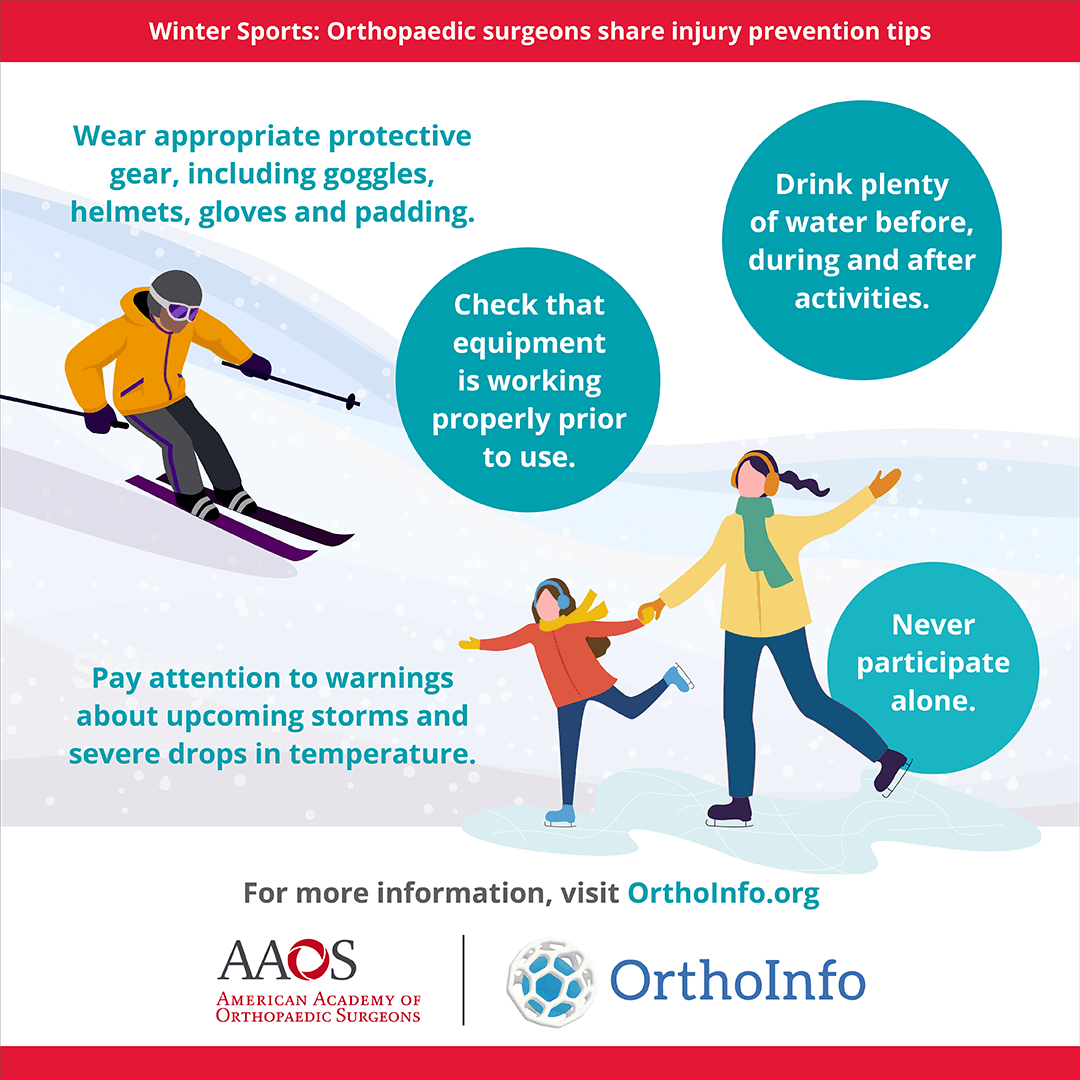Staying Healthy
Winter Sports Injury Prevention
Almost 200,000 people were treated at hospitals, doctors' offices, and emergency rooms for injuries related to winter sports in 2018, according to the U.S. Consumer Product Safety Commission. This figure includes:
- 76,000 injuries from snow skiing
- 53,000 injuries from snowboarding
- 48,000 injuries from ice skating
- 22,000 injuries from sledding and tobogganing
Common winter sports injuries include sprains, strains, dislocations, and fractures. Many of these injuries happen at the end of the day, when people overexert themselves to finish that one last run before the day's end. Most winter sports injuries can easily be prevented if participants prepare for their sport by keeping in good physical condition, staying alert, and stopping when they are tired or in pain.
Practice Winter Sports Safety
To help prevent injury during your favorite winter sports and activities, follow the safety tips below:
- Never participate alone in a winter sport.
- Keep in shape and condition muscles before participating in winter activities.
- Warm up thoroughly before playing or participating. Cold muscles, tendons, and ligaments are vulnerable to injury.
- Wear appropriate protective gear, including goggles, helmets, gloves and padding.
- Check that equipment is working properly prior to use.
- Wear several layers of light, loose and water- and wind-resistant clothing for warmth and protection. Layering allows you to accommodate your body's constantly changing temperature. Wear proper footwear that provides warmth and dryness, as well as ample ankle support.
- Know and abide by all rules of the sport in which you are participating.
- Take a lesson (or several) from a qualified instructor, especially in sports like skiing and snowboarding. Learning how to fall correctly and safely can reduce the risk of injury.
- Pay attention to warnings about upcoming storms and severe drops in temperature.
- Seek shelter and medical attention immediately if you, or anyone with you, is experiencing hypothermia or frostbite. Make sure everyone is aware of proper procedures for getting help, if injuries occur.
- Drink plenty of water before, during, and after activities.
- Avoid participating in sports when you are in pain or exhausted.
Contributed and/or Updated by
Peer-Reviewed by
AAOS does not endorse any treatments, procedures, products, or physicians referenced herein. This information is provided as an educational service and is not intended to serve as medical advice. Anyone seeking specific orthopaedic advice or assistance should consult his or her orthopaedic surgeon, or locate one in your area through the AAOS Find an Orthopaedist program on this website.







